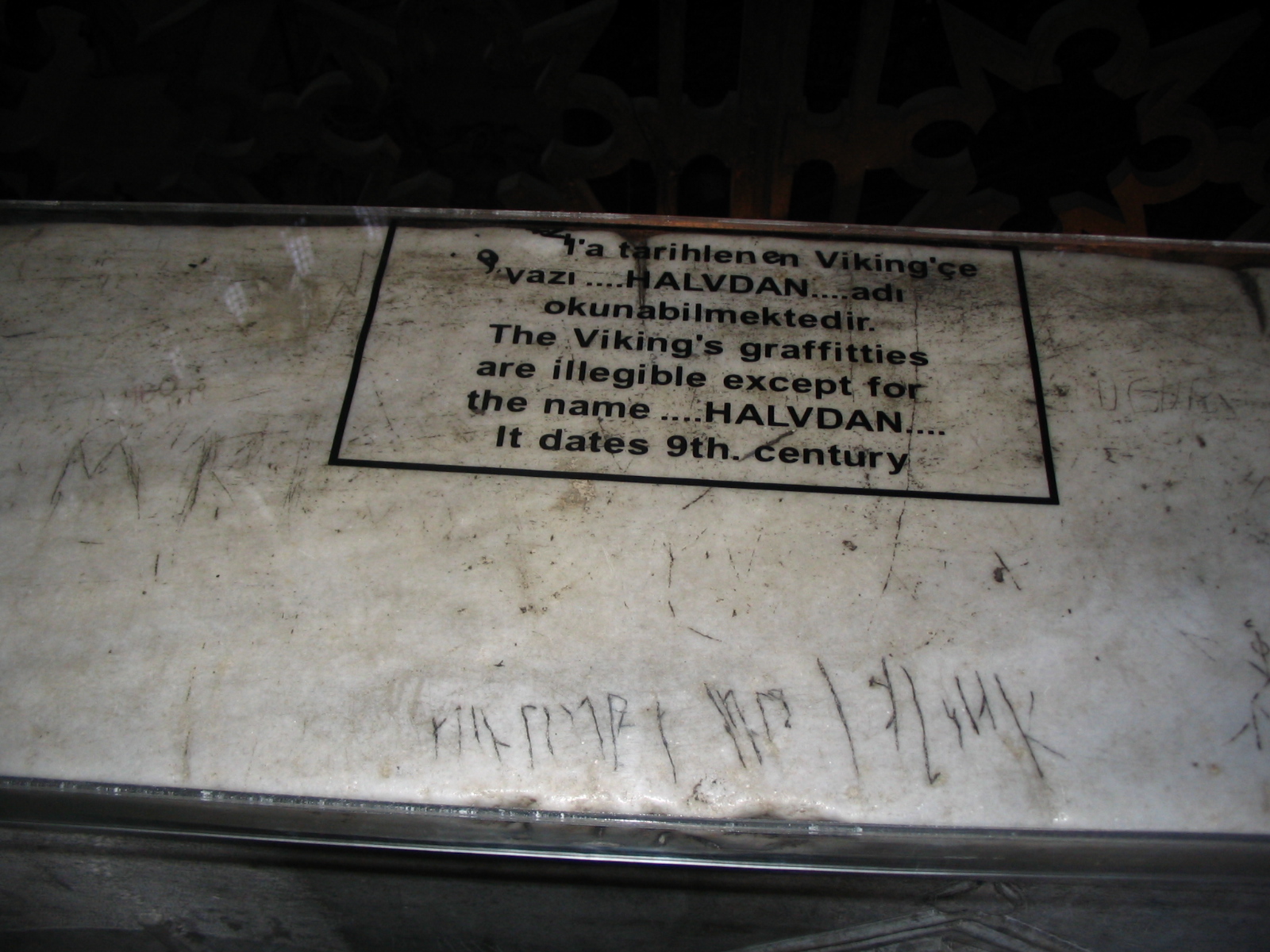Halvdan was here.
Most Viking history texts tend to reference this wonderful bit of runic graffiti, but hardly ever show it, so NorsePlay has decided to feature this detailed photo of Halvdan's inscription. Probably carved by a bored Viking turned Varangian Guardsman while having to endure a tedious mass while standing in the upper gallery of the Church of Hagia Sophia, his action was definitely counter to the preached values of humility he was hearing and more from his Arch-Heathen worldview of establishing reputation and leaving your mark of achievement forever on the world. In this simple way, Halvdan has succeeded.
Note Halvdan wasn't the only sermon-bored Varangian either as there are two more runic inscriptions, and possibly five on top of that awaiting valid confirmation, along with carvings of four drakkar Viking ships! Arinbárðr was another identifiable name, but his carving is much less readable than Halvdan's.
In Byzantium, an environment where literal cutthroat politics always outweighed its Christian context, one required Arch-Heathens, who remained more loyal to the throne rather than the contestants for it, as an impartial, bloodthirsty, and elite bodyguard, the Varangian Guardsmen, or "men of the pledge", a term which reflects the Heathen value of Oathing.
Such exceptional loyalty had its benefits too, as when the emperor died (probably only on the condition of natural causes) the Varangians also got to select as much gold as they could comfortably carry from the royal treasury for their job well done.
[Halvdan photo by user NotHome from Wikimedia Commons, later Varangian Guard illustration from Osprey.]



Comments
Post a Comment